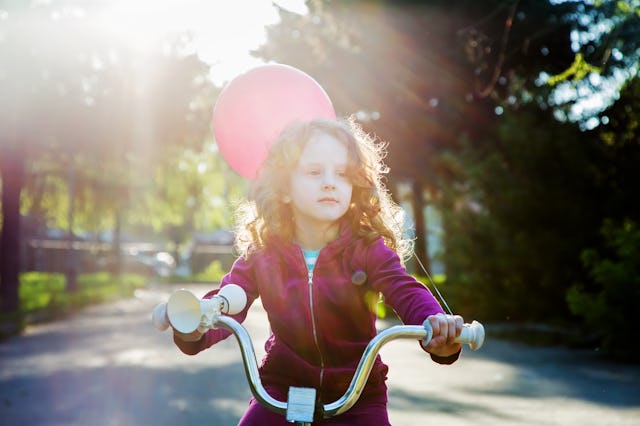Should Schools Teach Kids To Ride Bikes?

I learned to ride a bike in the parking lot of a bank in our small town in West Virginia. On weekend mornings, my grandfather would jog along behind me, steadying the seat as I pedaled around and around the deserted lot. As my confidence grew, we took longer rides on the groomed paths along the Potomac. Those riverside rides remain among my sweetest childhood memories.
But now I live in New York City, in an apartment too small to store a bike, far away from any parks big enough to really ride in. People do bike on the streets, but I don’t have the nerve for it. My 5-year-old son still doesn’t know how to cycle, and I don’t know what to do about it.
Then I read this: The public schools in Washington, D.C., are teaching second-graders to ride bikes as part of their physical education classes, and I thought, genius.
As Amanda Kolson Hurley reports for CityLab, Miriam Kenyon, the director of health and physical education of the D.C. public schools, has put together a program in which 475 BMX bikes are dispatched to various schools in fleets of 25 for a few weeks at a time. Second-graders get intensive cycling lessons—something that large cohorts of the city’s kids weren’t learning how to do.
The program is part of an initiative called “Cornerstones,” which offers specialized curricula to D.C. students in the hopes of closing the achievement gap between affluent and less affluent students. The bike program aims to teach all D.C. public school kids, even those hampered by lack of bikes and safe streets to ride on. As Hurley writes: “Urban biking has a well-documented equity problem. As Capital Bikeshare expands and D.C. adds more bike infrastructure, there’s a danger that low-income residents will be left out of the city’s two-wheeled renaissance. Universal bike education could prevent that.”
One of the many culprits of our childhood obesity crisis is lack of exercise. When I was a child, most kids walked or biked to school in our small town. But Lauren Marchetti, the director of the National Center for Safe Routes to School, told me in an interview last year that the number-one reason parents give for not allowing their kids to travel to school on foot or bike is distance, with safety being a close second. There aren’t a lot of dedicated bike lanes that kids can safely travel. But the more people who walk or bike, the safer pedestrians and cyclists are in general, according to SafeRoutesPartnership.org.
Elected officials balk at carving out more space for bike lanes when they believe there aren’t enough cyclists to make it “worth it,” so getting a new generation of kids comfortable with biking means that we may be able to gradually shift the ratio of auto lanes to bike lanes. Washington’s bike-share program has already had a small but measurable effect on reducing traffic congestion.
I’d like my kids to learn how to ride in the same way I did, but it’s just not possible in our current circumstances. If part of their PE class at school were dedicating to cycling, I’d be thrilled. It would give them a lifelong athletic skill that they could rely on for cheap, healthy, green transportation. Frankly, I wouldn’t mind hopping on a bike again myself. We could go for a ride along the river.
This article was originally published on